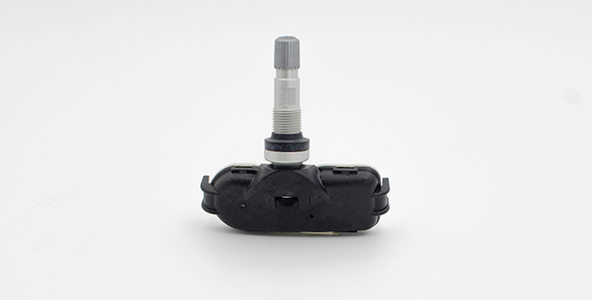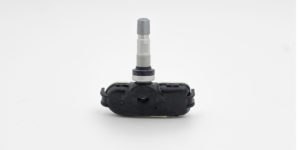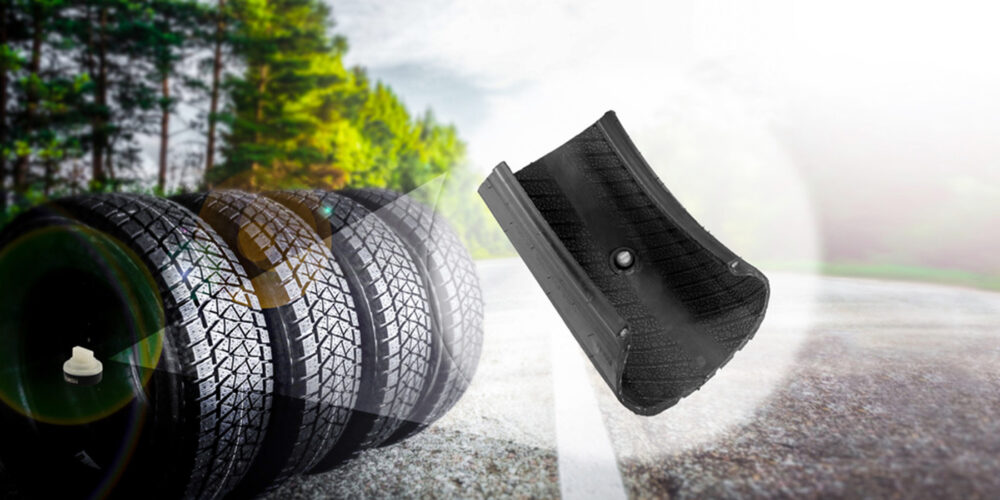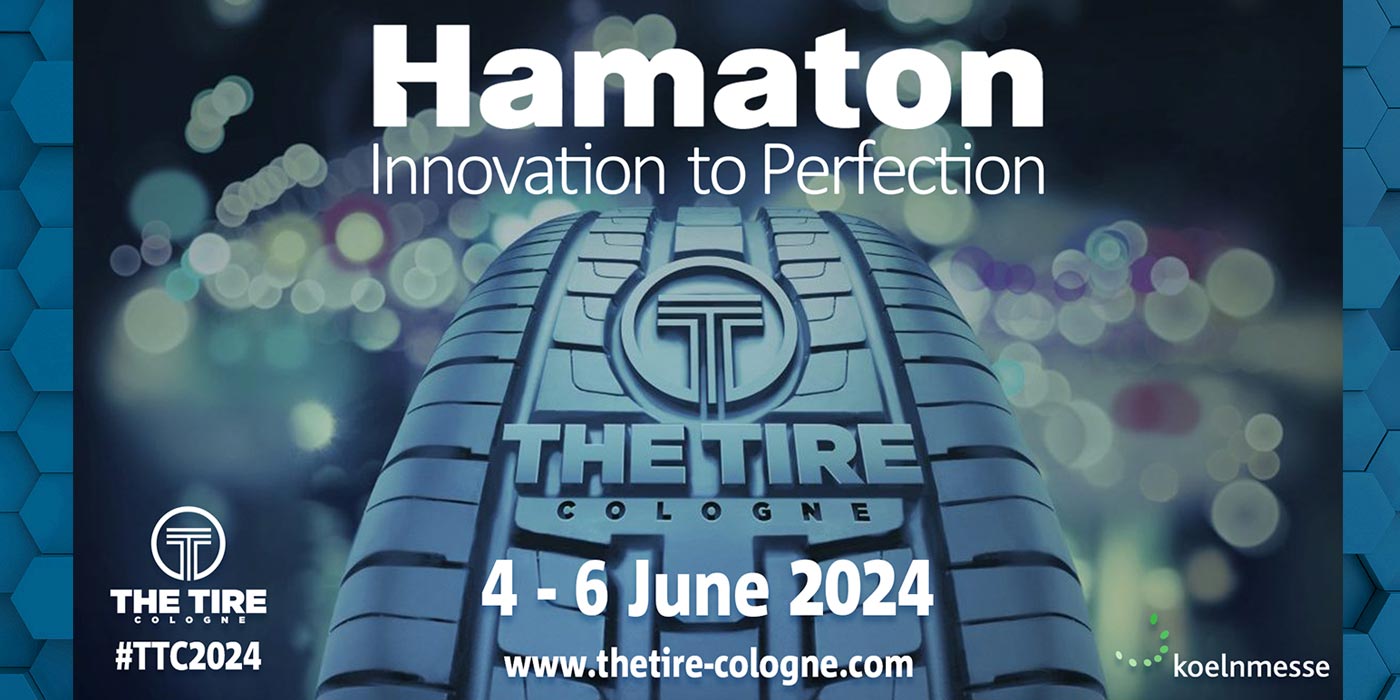The driverless car is captivating the automotive industry and the world. While tech giants compete to create artificial intelligence that can anticipate accidents and take the place of the human decision maker, automotive component manufacturers are working to integrate a variety of components into a cohesive, centralized control system for the vehicle.
It may seem that the steering wheel, accelerator, and brakes are the most crucial components of autonomous driving, but each part of a vehicle has a role to play in replacing a driver’s judgment. The tire, highly sophisticated yet often underappreciated, is now adapting as well. The ability of intelligent tires to gather information from the road ahead and communicate it to the vehicle control system above makes them critical for successful autonomous driving.
The Future of Tire Technology
Level 3 autonomous vehicles, which combine computer-driven steering and as-needed human intervention, are projected to reach almost 75 million vehicles in the marketplace by 2030. This estimation has major implications for intelligent tires, which provide data integral to the movement and maintenance of autonomous vehicles. When thinking about tires as a data source, it is important to consider the following:
• How will an autonomous vehicle respond to tire failure, such as a flat?
• How will intelligent tires provide vehicle-to-vehicle communication to optimize spacing and stopping time?
• How will intelligent tires respond to adverse weather?
• How do the sensors that provide essential data get replaced and/or recalibrated with a new set of tires?
Tire manufacturers and testers are responding to these questions by defining the technologies necessary for intelligent tires to be effective. Such capabilities include tire pressure monitoring, load and wear detection, self-inflation, traction analysis, maintenance alerts, and telematics feedback to vehicle control systems. From a testing perspective, these new sensors must not only provide critical information, they must also withstand a wide variety of road conditions.
Tire Pressure Monitoring Systems
There are three types of tire pressure monitoring systems (TPMS), each of which measure pressure through different methods:
• Direct measurement systems read pressure from the tire valve through an array of sensors and report tire pressure in real time.
• Indirect measurement systems detect low pressure by comparing wheel speeds via sensors in the anti-lock braking system (ABS).
• Hybrid systems combine direct and indirect methods to determine which tire is showing a low-pressure reading.
TPMS can be attached to the tire valve through the wheel or simply banded to the wheel. These sensors must withstand temperatures up to 200ºF, while experiencing centrifugal g-force that can reach 283g at 70 mph.
Common TPMS Testing Methods
The most common type of TPMS is the direct measurement system. Tests on this type of system are conducted under SAE 2657, which covers TPMS for light-duty highway vehicles. Different test setups are needed depending on the type of data you are looking to obtain. For example, motion and vibration testing require the device under test to be mounted on a wheel, while pressure testing requires the device under test to be mounted in a pressure cap. Some specific methods that measure mechanical and durability attributes of TPMS include:
Rapid Deflation
• The device is pressurized up to 620 kpa for a minimum of 16 hours, and then pressure is deflated in less than a second to see how the device responds to tire failure.
Shock
• A mechanical shock test can provide a 200g peak load, and drop testing simulates damage through shipping or installation with a one meter drop onto concrete.
Mechanical Vibration
• A sweep from 5 to 200 Hz, and up to 20g, simulates higher frequency while the device is on the wheel or in shipment.
Environmental Exposure
• Temperature: Thermal cycle, thermal shock, and extreme temperature testing are used to see how the device will react to quick, gradual, and sustained changes in temperature.
• Humidity: The device is placed into a humidity chamber for up to 96 hours at 95% humidity to test the durability of electronic components.
• Frost: The device is exposed to -40ºC to determine how frost build-up could affect electronics.
• Altitude: Altitude testing recreates air shipping conditions.
• Contamination: The device is soaked in water, soap, lubricant, and other substances that it will likely contact while secured to a wheel to determine how it will react.
• Salt fog: The device is submerged into a 5% salt mixture at 35ºC to determine the potential for corrosion.
All of these tests are necessary to provide a holistic look at how a TPMS will perform over the course of its service life. For engineers who plan on sending these devices for electronic durability testing, it is important to provide the correct equipment to read the sensor for cyclic, vibration, and pressure testing. Also, keep in mind the common failure modes that are found during testing. These failures include galvanic corrosion of dissimilar metals, mechanical failure from forces generated by the wheel, and internal electronic failures.
Testing Tire Valves
Direct measurement systems rely on data from tire valves, so to thoroughly understand the effectiveness of these systems, the tire valves themselves must be tested.
Tire valve performance requirements fall under SAE 1205/1206, which includes the following testing methods:
Pressure
• Burst and valve core or unsealing tests push the valve’s pressure threshold to extreme conditions.
Temperature
• The valve core seal and valve-to-rim seals are exposed to specified temperatures to test for leaks in the valve core, in order to determine the valve’s ability to maintain a seal in extreme temperatures.
Installation
• Force-to-seat testing determines the force required to seat the valve, and force-to-pull-out testing determines the force required to remove the valve from the wheel.
Material
• Adhesion testing seeks to determine whether a valve maintains its adhesion properties after aging.
• Hardness testing compares the hardness of a new valve and a valve aged to the above specification.
• Ozone resistance testing looks for rubber degradation in a valve that has been placed in an ozone chamber for a specified amount of time after aging.
Tire-Mounted Sensors
For the purposes of tire tracking both in the manufacturing process and in service, manufacturers have begun using embedded RFID sensors. Other types of newly developed sensors can report pressure, temperature, footprint length and tread depth. While this is a quantum leap in gathering tire data, a smart tire creates unique testing challenges because of the way sensors impact the tire as a whole. For example, an RFID tag embedded inside the sidewall can act as a new crack initiation site.
Test engineers seek to understand how the spinning of a tire and road conditions affect the accuracy of information coming from the sensor, the sensor’s ability to function, and the potential for the sensor to cause a tire problem while in motion. The Smithers Rapra laboratories use dynamic impact testing, a testing method that uses cleats to simulate irregularities in the road and acceleration at both city and highway speeds. A cleat can be mounted straight across a testing drum or at an angle of +/- 45 degrees.
When evaluating sensor output over the course of testing, information must be found that corroborates the sensor’s pressure, temperature, footprint length and tread depth readings in order to determine whether or not the technology is performing as designed. Pressure can be checked with a calibrated pressure gauge or by observing the regulated pressure during testing. A probe-type thermocouple, an embedded thermocouple, or non-contact temperature mapping can be used to determine tire temperature. Contact measurement can determine footprint length. Lastly, a treadwear test with laser tread profilometer can be used to measure tread depth.
Conclusion
As tire technology continues to improve, there are a multitude of new challenges that arise. Adding new capabilities, however small, can seriously alter functionality and even lead to product failure. These are the concepts that are on the minds of research and development departments across the world and must be tested in order to bring the promise of autonomous driving to life. TR
Kyle Goodrich joined Smithers Rapra’s product testing group in 2012. He is a Product Testing Engineer focusing on pressure, vibration, temperature (PVT) testing and component performance. For details, visit www.smithersrapta.com.















